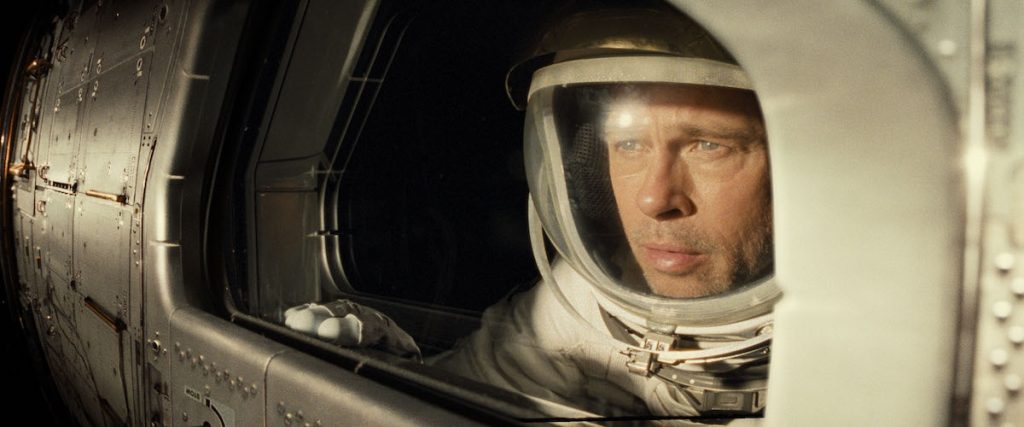
This piece began life as an inquiry as to why who’s in charge in Hollywood, whomever that might be, seldom if ever employ real science fiction writers to write the story for science fiction movies.
Then I happened to see a movie from a couple of years ago titled, AD ASTRA (Latin for: Is this trip necessary?)
After seeing it I became convinced the director and writers, along with any reviewer who gave it a positive review, flunked physics, astronomy and likely English Lit.
The story: Brad Pitt plays astronaut Roy McBride, at present a maintenance man on a radio tower that extends beyond the stratosphere. After taking a fall from said towner as a result of something his believed dead father might have done, Roy gets orders from Space Command: Get your ass to Mars!
Clifford McBride (Tommy Lee Jones) a Story Musgrave kind of astronaut who went beyond, led an expedition code named Lima to the planet Neptune to search for signs of ET. This was about 20 years ago and he is thought dead.
Why Neptune? We are told it is outside the Sun’s pesky heliosphere, which plays havoc with sensitive equipment listening for signs of intelligent life.
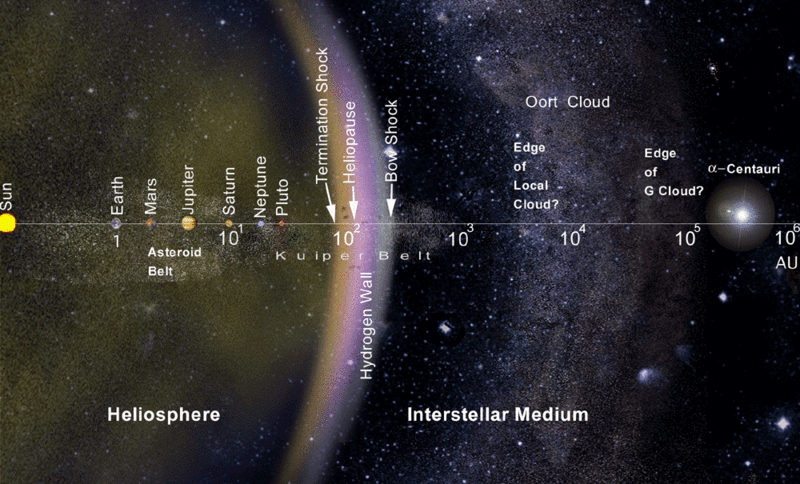
The only thing wrong with that idea is: Neptune is well within the heliosphere.
The story treats space as two dimensional, like the ocean. It is if the orbital plane is all that exists, and what is north or south does not count.
Power surges are coming from the observation station called Lima, commanded by the elder McBride orbiting Neptune. These surges are playing hell with folks on Earth. These surges might kill everyone. We are told they are a result of problems with the station’s matter/antimatter reactor.
Now, consider the amount of energy the station would have to produce to effect Earth’s systems over two billion miles away, in light of the inverse square law.
“…a specified physical quantity is inversely proportional to the square of the distance from the source of that physical quantity.” (Wikipedia)
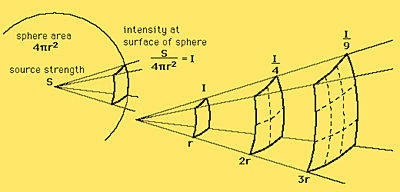
In other words, there is a significant reduction of the energy as it distances from the source. In this case, over two billion miles.
So anyway, Roy is sent by Space Command to Mars where he will broadcast a message to dear old dad, just trying to talk sense to the old man.
First stop, the moon! Royboy takes a commercial rocket to the lunar base, then catches a moon buggy across some disputed territory to the SpaceCom launch center when he and his buds are ,and I am not making this up, are attacked by space pirates. Ho,ho,ho and a bottle of rum. Where is Rocky Jones Space Ranger when you need him?
Space Pirates! Shiver me timbers! Avast ye, on the far horizon, she flies the skull and crossbones! Hoist the Jolly Roger!
Sadly, Roy was not carrying pieces of eight.
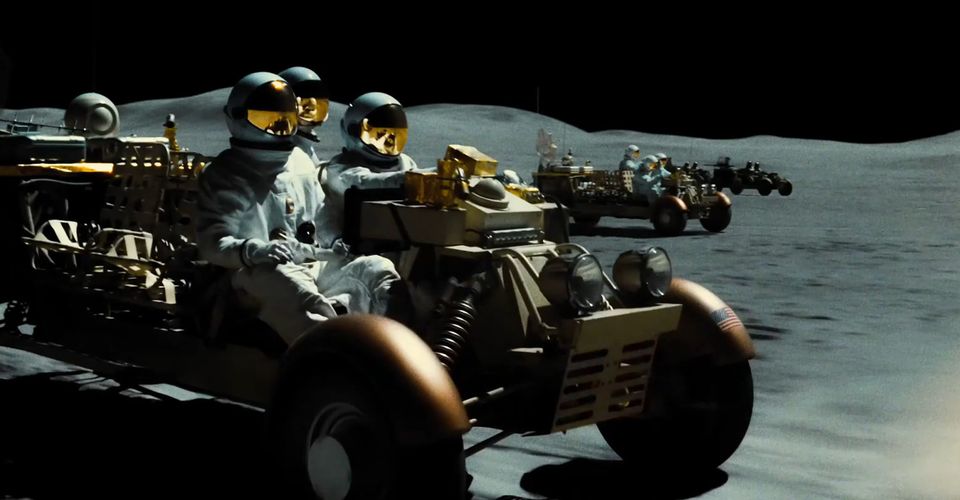
Roy boy survives the attack and makes it to the Mars launch ship. Because of the recent trauma he is ordered to undergo a psych eval. The shrink is the same computer shrink who evaled THX 1138! Good to go Roy…
On the 19 day trip to the Red Planet, Roy and the ship’s captain responded to a destress call from a Norski research station. The baboon on broad mutinied and killed the crew, and the captain of the Red Planet Express for being stupid enough to not to send out someone else to investigate. He was the captain after all, and it was not Star Trek. Duh.
On Mars, Roy makes a broadcast to his dad, way out on orbit around Neptune. On the second try, SpaceCom gets a reply from ol’ dad, something they just do not want to hear. Roy is not allowed to hear it, either. Why? Who knows. Maybe Cliff knew what happened to Judge Crater, and as SpaceCom is a true government entity, it was slapped with a Top Secret stamp.
The fallacy here is that Mars is closer to Neptune for the purposes of a radio broadcast, so Roy has a better chance of being heard than from Earth or the Moon. The distance from the Earth to Mars is anywhere from 4 to 22 light-minutes, depending on the orbital position. From Mars to Neptune is four light-hours. So, a message sent from Earth might take as long a four light-hours, 22 light-minutes. A stupendous 22 minute savings from Mars! Wow!
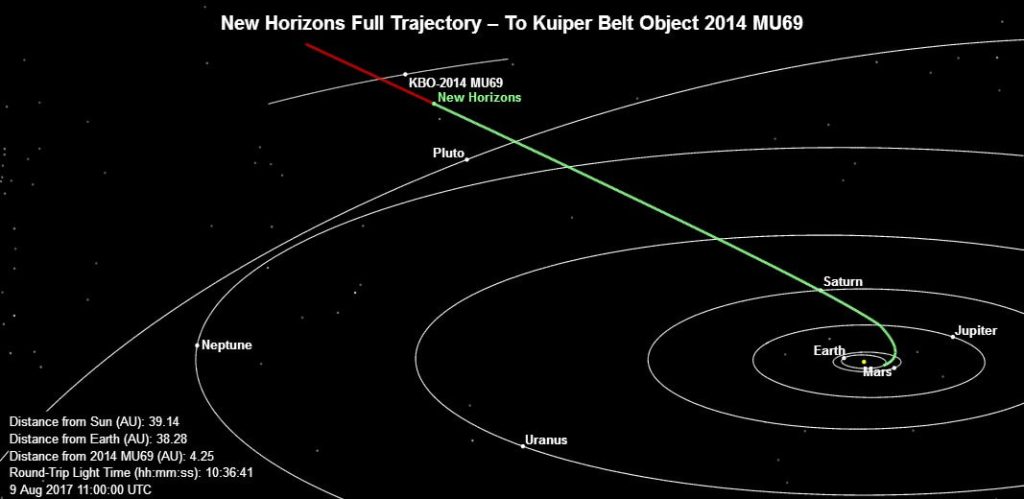
Roy has another visit to the shrink. He flunks. Next bus home for him. But damnit, he wants to go to Neptune, by god.
He sneaks aboard the Neptune ship just as it is taking off. When SpaceCommand learns he is aboard, they order the crew to âneutralizeâ him. So they do what any astronaut would do. They pulled their shootin’ irons and blast away.
Luckily, just like the Star Wars storm troopers, they are poor marksmen, and only manage to kill themselves. The Keystone Cops in Space.
Seventy-nine days later Roy arrives at space station Lima. He enters the station and discovered the bodies of the crew Cliff had murdered. They got tired of waiting for ET to call and wanted to go home, so mutinied. The elder mcBride could not allow that, as he was in rehearsal to play Kurtz in his private production of Heart of Banal Darkness.
Cliff tells his son he never gave a crap about him and his mother, he just wanted to go to the beyond and wait by the phone for a call that would never come.
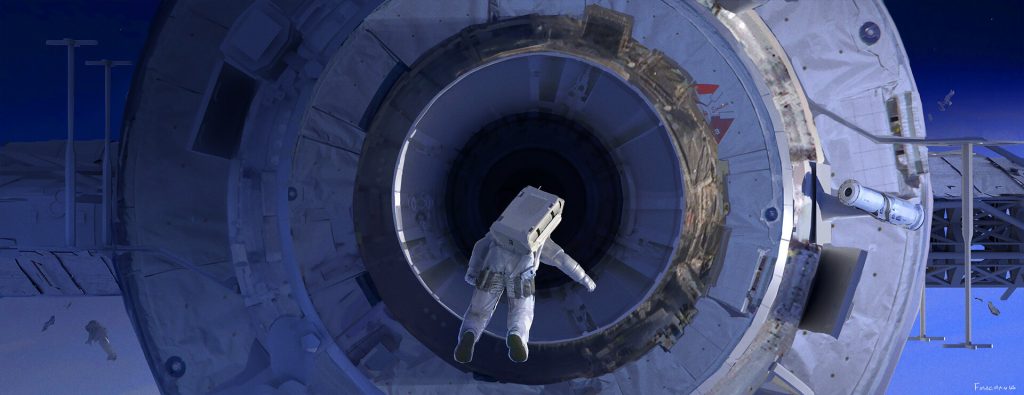
You see, in the squered science of this nonsense, the Lima station has equipment with the ability to determine there is no intelligent life out there in the galaxy. There is none to be found in this story, thats for sure.
Cliff decides to to return home with Roy, but in the last minute choses to drift down to the surface of Neptune in only his space suit. Roy had already started the timer on the nuclear bomb he had set on Lima. The bomb was supposed to stop the power surges coming from the Lima reactors and save the people of Earth from a fate worse than death..
I am not an expert, but I would think a nuclear detonation would cause a rather large power surge.
Roy elects to allow the shockwave from the nuclear detonation to give his ship a boost on the way back to Earth. The problem is there is no shock wave in the vacuum of space. Roy uses it nonetheless.

Roy’s voiceover narration explains the story over the course of the entire film. So much for the art of cinema.
Consider: the gold standard for outer space science fiction movies was set by 2001 A space Odyssey. Co written by Arthur C. Clarke, science fiction writer and bonafide scientist. The science in 2001 was solid.
You think I am I being too picky about the science? Remember, it is called, Science Fiction, not Fantasy Fiction.
Oh, the photography was nice and the outer space stuff looked good. Brad Pitt appeared to be under the influence of Seconal. His narration sounded like it.